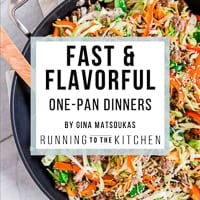Looking younger for longer involves more than just using the right skincare products. The foods you eat can have a direct effect on collagen levels, skin elasticity and how quickly signs of aging appear. Diets high in certain ingredients can lead to inflammation, dehydration and damage to the structures that keep skin firm. Over time these effects can make fine lines more pronounced and skin appear less resilient. Reducing how often you eat specific foods can support healthier skin and slow the visible aging process. These are some of the most common foods linked to premature aging and the reasons they can have such a strong impact.

Soda & Energy Drinks
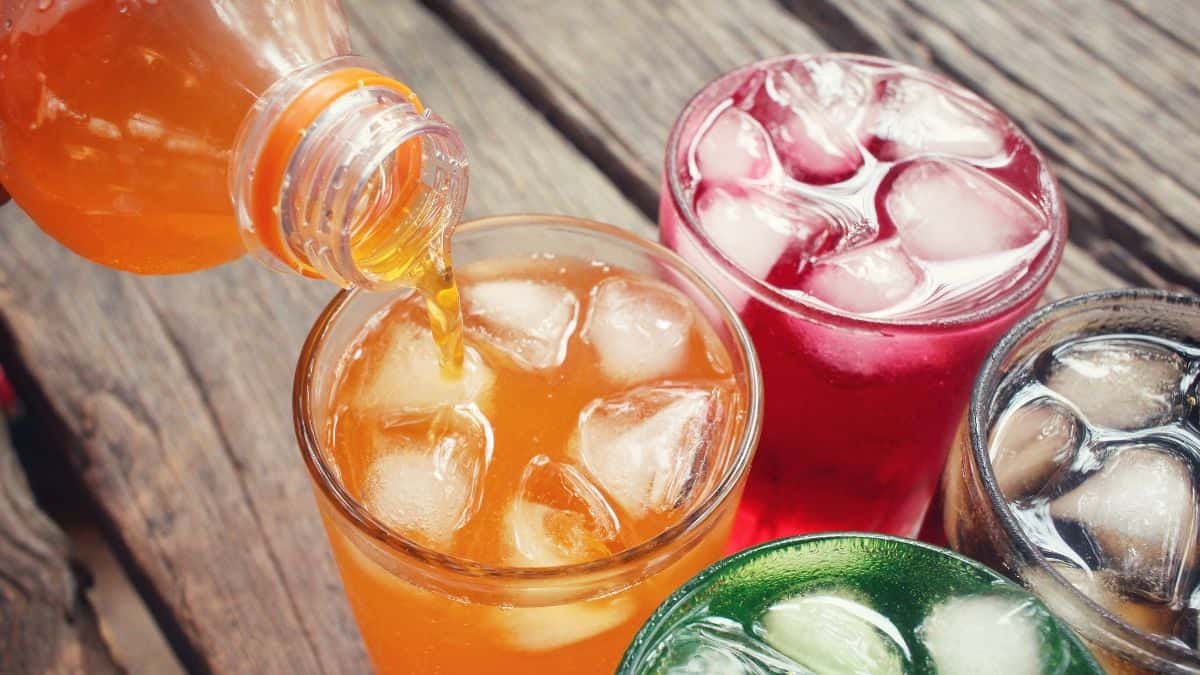
Sugary drinks like soda and energy drinks are packed with fructose, which puts extra stress on the liver and can lead to insulin resistance over time. These drinks are also linked to advanced glycation end products (AGEs), compounds that weaken collagen and reduce skin elasticity (NIH). Regularly drinking them can speed up visible aging by making skin less firm and more prone to fine lines. Swapping them for water or unsweetened herbal tea keeps you hydrated and helps protect your skin’s structure.
Alcohol

Alcohol might be part of your social routine, but it has a big impact on how quickly your skin ages. It draws water from your body and skin, making lines and wrinkles more pronounced. Drinking regularly can also interfere with deep sleep, slow cell repair, and lower vitamin A levels, a nutrient that supports healthy skin renewal. Reducing how much you drink or alternating with water can help your body recover and keep your skin looking healthier longer.
Fried Food

Frying food at high heat in oil creates trans fats and harmful compounds that promote inflammation. This cooking method also produces AGEs, which damage the proteins that keep skin firm and smooth. Eating fried food too often can raise cholesterol levels and speed up skin aging from the inside out. Baking, steaming, or air frying can still give you a satisfying meal without the same long-term impact.
Chips

Chips may be a favorite snack, but they come loaded with sodium and unhealthy fats that can dry out your skin and limit healthy blood circulation. Too much salt can make skin look dull and less elastic, while processed oils promote inflammation. Even veggie chips and “healthier” versions often use the same processing methods. Choosing unsalted nuts or air-popped popcorn gives you crunch without adding to the aging process.
Store-Bought Smoothies & Juices
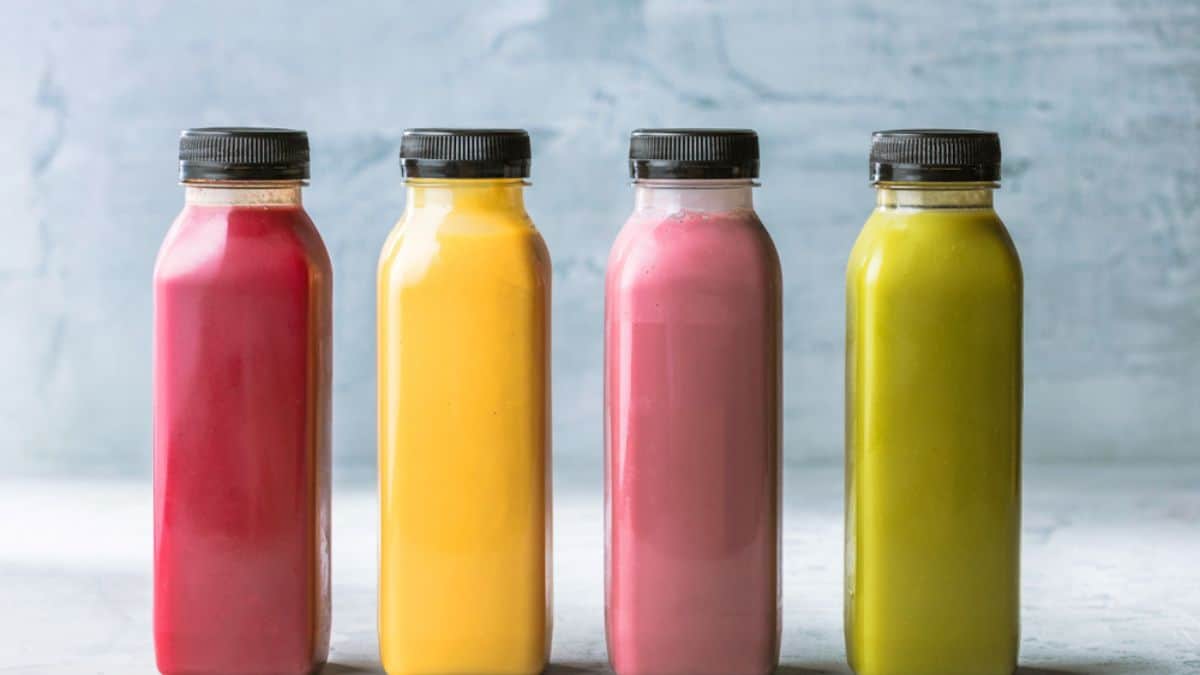
Many store-bought smoothies and juices hide large amounts of sugar while offering little to no fiber. Without fiber to slow the absorption, the natural and added sugars cause sharp spikes in blood sugar, which can trigger inflammation and break down collagen more quickly. Making your own smoothies at home lets you control the sweetness, keep the fiber, and add nutrient-rich ingredients that are better for your skin.
Flavored Yogurt
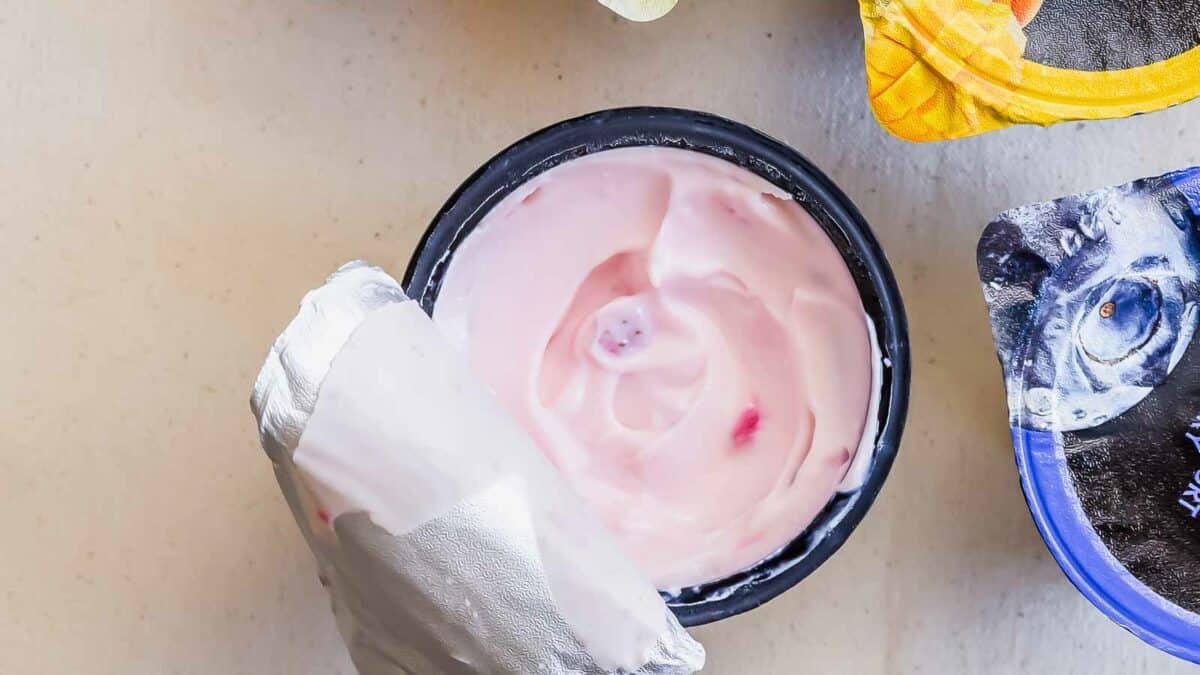
Flavored yogurt can seem like a healthy snack, but many brands pack in more sugar than a dessert. High sugar intake promotes inflammation, which weakens the proteins that keep skin firm and smooth. It can also disrupt the balance of good bacteria in your gut, which research shows is closely tied to skin health. Plain Greek yogurt with fresh fruit gives you the benefits of probiotics without the sugar overload.
Charred Meat

Cooking meat until it is heavily charred produces compounds called polycyclic aromatic hydrocarbons (PAHs) and heterocyclic amines (HCAs). These are linked to inflammation, cancer risk, and a breakdown of collagen that can speed up visible signs of aging. Marinating meat before cooking and avoiding heavy charring can reduce these compounds while still letting you enjoy grilled flavors.
Trans Fats
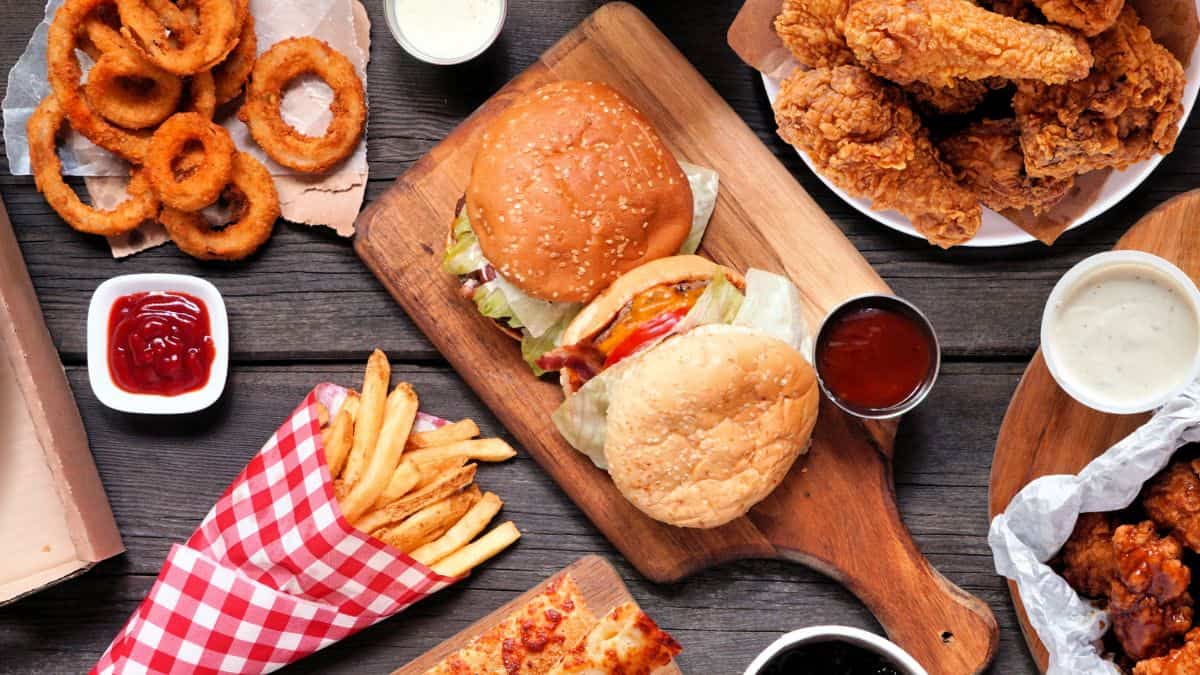
Trans fats, often found in processed and fried foods, are known for raising LDL (bad) cholesterol, lowering HDL (good) cholesterol, and fueling inflammation. All of these factors can age your skin and body faster. They still appear in some baked goods, margarine, and snack foods, so checking labels and choosing whole, unprocessed ingredients can help you avoid them entirely.
Salty Foods

A high-sodium diet can raise blood pressure and strain your heart and kidneys, but it also draws moisture from your skin. This dehydration can make skin look dull and highlight fine lines. Processed snacks, frozen meals and canned soups are some of the worst offenders. Cooking meals from fresh ingredients lets you season with herbs and spices for flavor without relying on salt.
Processed Meat

Bacon, sausage and deli meats are loaded with preservatives and sodium, both of which contribute to dehydration and can weaken collagen. These meats also contain AGEs, which break down the structure that keeps skin firm. Choosing fresh cuts of meat or plant-based protein sources more often can help slow these effects and support overall skin health.
Agave
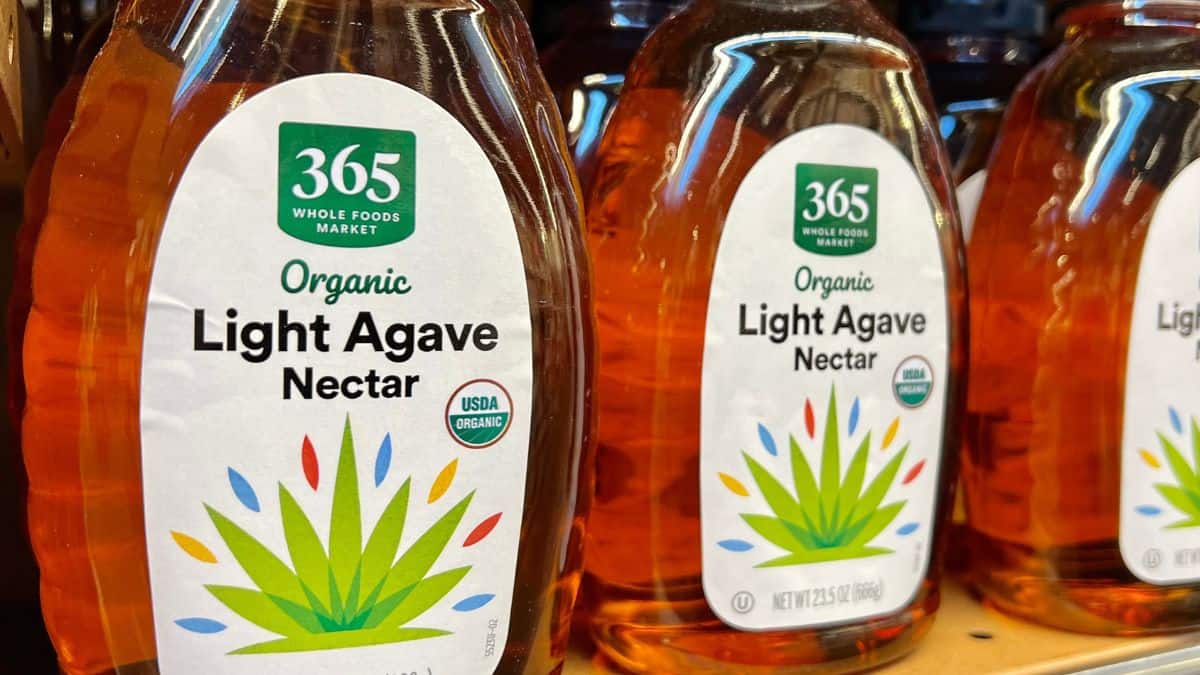
Agave nectar may be marketed as a natural sweetener, but it is very high in fructose. This type of sugar can stress the liver, increase insulin resistance, and contribute to faster skin aging. Opting for fresh fruit or low-fructose sweeteners helps you manage sugar cravings without the same impact on collagen and elasticity.
10 Foods That Could Be Ruining Your Skin

We all want clear, glowing skin, but sometimes our diet gets in the way. Believe it or not, some everyday foods might be causing your breakouts, redness, and dullness. Take a look at some common culprits that could be ruining your skin and find out why you might want to cut back on them.
Read it Here: 10 Foods That Could Be Ruining Your Skin
12 Foods You Think Are Healthy But Aren’t
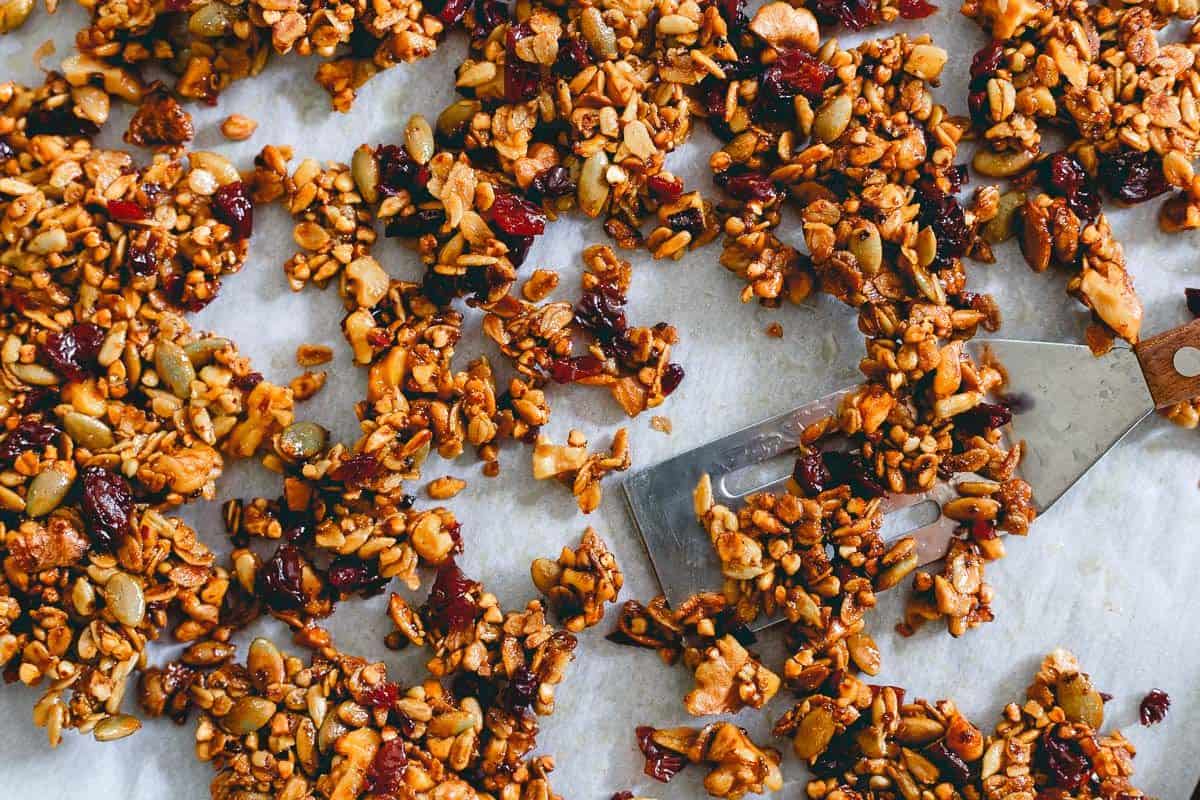
It’s easy to be fooled by foods that carry a healthy label but don’t live up to the hype. From snack bars packed with sugar to salads drenched in high-calorie dressing, misleading healthy foods are everywhere. We’re uncovering the top foods you might think are good for you but could actually sabotage your diet.
Read it Here: 12 Foods You Think Are Healthy But Aren’t
Select images provided by Depositphotos.
Gina Matsoukas is an AP syndicated writer. She is the founder, photographer and recipe developer of Running to the Kitchen — a food website focused on providing healthy, wholesome recipes using fresh and seasonal ingredients. Her work has been featured in numerous media outlets both digital and print, including MSN, Huffington post, Buzzfeed, Women’s Health and Food Network.
